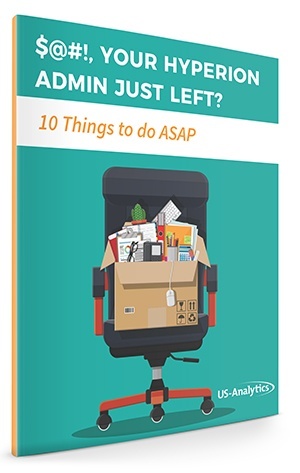Once you have chosen the right Hyperion managed services provider, proper onboarding ensures that your expectations are set and met throughout the term of your contract. A good managed services provider will have a thorough onboarding methodology designed to bring them up to speed quickly and prevent potential issues down the road.
Below are a few tips that should be included in every onboarding process, whether you’re needing just a few hours per month for system health checks or end-to-end Hyperion implementation and administration.
1. Pick the right points of contact (POCs)
Identifying the right resources that will represent your company as points of contact from your finance and IT teams is critical. These individuals are familiar with your Hyperion environment and will be able to articulate your needs and expectations to the managed services team. POCs will be heavily involved in the onboarding process by providing information surrounding your environment, user community, applications, and infrastructure needs.
2. Establish a timeline
Setting up recurring meetings, prioritizing activities, and assigning deliverables will streamline onboarding for both your organization and the service provider. Regularly scheduled meetings will ensure your timetable is on track; prioritizing activities is a critical path, as there will likely be dependencies; and assigning deliverable tasks and dates to POCs on both teams will maintain accountability.
3. Share your documentation to identify gaps
In a perfect world, all documentation supporting your Hyperion environment would be up to date, easy to read, and readily available. The reality is that many companies have very few documents to rely on other than handwritten notes left by the previous administrator. Share everything you do have with your managed services provider so that they can assist with what needs to be updated, added, or created.
4. Determine level of system access
Supporting clients remotely raises the obvious question of gaining system access. Generally your IT department will determine the best way of providing remote access to your managed services provider. Some of the most commonly used are VPN and Remote Desktop (RDP). Once you have made this decision, accounts and passwords will need to be created not only for remote access but also for your Hyperion applications. Discuss the provider’s Hyperion access needs in detail to determine how many accounts will need to be set up and the level of access that will be needed.
5. Test the service desk
When a Hyperion-related issue arises, you will need reach out to your managed services provider. Generally, this is done by opening a ticket through your provider’s help desk, or service desk.
During the onboarding process, identify who will be opening tickets for your company and provide that information to the managed services team. Most companies have one or two people set up as primary contacts to open tickets as well as a backup for each. Make sure to test the ticketing system during onboarding to make sure your ticket is received — few things are more frustrating than waiting on a reply to a message that was never received by the other party.
Positioning yourself for success
By following these steps from the start of your engagement, you will be better served in the long run to realize a successful partnership with your Hyperion managed services provider.
Learn how three companies with varying Hyperion administration needs onboarded managed services to cut costs as well as improve Hyperion performance:
- Forum Energy Provides Overwhelmed In-House Admins with Cost-Effective "As-Needed" Remote Support
- After Admin Leaves Stewart & Stevenson, Innovative Bridge Program Delivers On-Site Assistance and Smooth Transition
- Williamson-Dickie Cuts Costs While Improving Hyperion Performance with Managed Services






